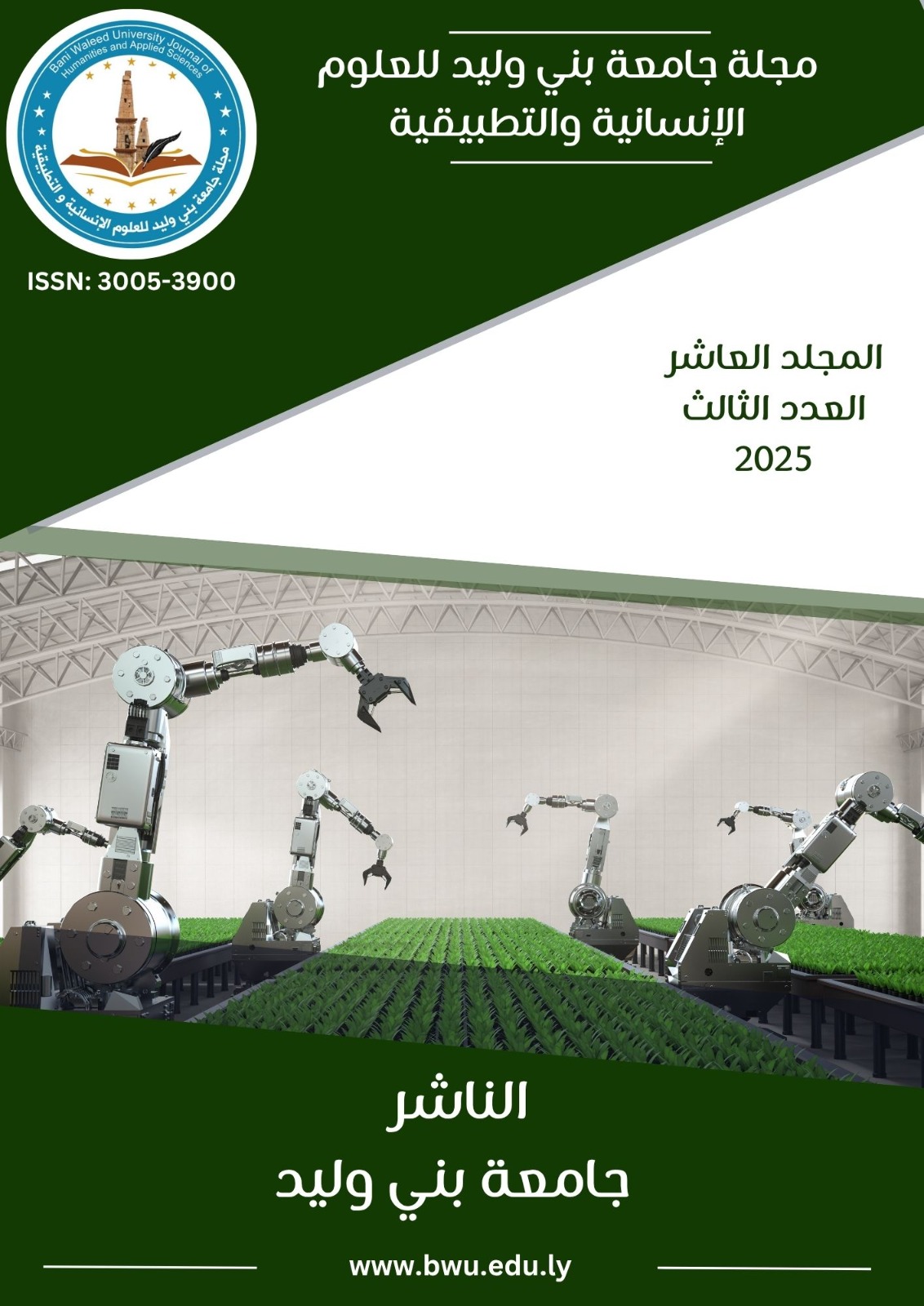A Secure Cloud Model for Malaysian SMEs
DOI:
https://doi.org/10.58916/jhas.v10i3.901Keywords:
SMEsaaS, Small and Medium-sized Enterprises, Cloud Computing, Cloud Computing Security, MalaysiaAbstract
Cloud computing refers to a model for delivering computing resources (such as networks, servers, storage, applications, and services) in a shared, accessible, and scalable manner, with minimal intervention from administrators or service providers. In the context of Small and Medium-sized Enterprises (SMEs), cloud computing emerges as a potential tool to enhance efficiency and competitiveness. However, inherent security concerns in the cloud computing environment represent a major obstacle to its widespread adoption by these enterprises. Unlike large corporations that are often equipped with Enterprise Resource Planning (ERP) systems facilitating the transition to the cloud, SMEs lack these advantages, making the adoption process more complex.
This paper aims to address this gap by achieving the following objectives: (1) analyzing the current status of Malaysian SMEs regarding cloud computing, (2) studying various cloud computing security models available for SMEs, (3) proposing an effective and suitable security model for the needs of these enterprises, and (4) developing a practical prototype to demonstrate the effectiveness of the proposed model. The study focuses on developing a new service for SMEs under the umbrella of cloud computing (SMEsaaS) and creating an innovative security model specifically designed for it. Initial results showed that the SMEsaaS model can reduce simulated data leakage risks by 30% while adding only 8% to the average response time, making it a promising solution for SMEs seeking to securely leverage cloud computing.
Downloads
References
Amini, M., & Bakri, A. (2015). Cloud Computing Adoption by SMEs in the Malaysia: A Multi-Perspective Framework Based on DOI Theory and TOE Framework. Journal of Information Technology & Information Systems Study (JITISR), 9(2), 121-135. https://papers.ssrn.com/sol3/papers.cfm?abstract_id=2841175
Undheim, A., Solsvik, F. H., Nesse, P. J., Salant, E., Michel, D., Lopez, J. M., et al. (2011). Exploiting Cloud Computing – A Proposed Methodology for Generating New Business. 2011 15th International Conference on Intelligence in Next Generation Networks, 241-246.
StudyGate. (n.d.). Zero Trust Security Models for SMEs in the Era of Cloud Computing. Retrieved from https://www.studygate.net/publication/391458799_Zero_Trust_Security_Models_for_SMEs_in_the_Era_of_Cloud_Computing
Ministry of Science, Technology & Innovation Malaysia. (2020). Vision 2020 and beyond: ICT and economic transformation. Ministry of Science, Technology & Innovation. https://www.mosti.gov.my
Abdullah, N., & Yusof, M. (2023). The role of ICT in Malaysia’s Vision 2020: Leveraging digital technology for national development. Journal of Digital Transformation, 5(1), 34-49. https://doi.org/10.1016/j.jdt.2023.02.001
Malaysia Digital Economy Corporation (MDEC). (2023). SME digital transformation report. MDEC. https://www.mdec.my
SME Corp Malaysia. (2023). Annual report 2023: Small and medium enterprises in Malaysia. SME Corp. Malaysia. https://www.smecorp.gov.my
National Institute of Standards and Technology (NIST). (2021). The NIST definition of cloud computing. NIST. https://doi.org/10.6028/NIST.SP.800-145
Petri, D. (2023). The economics of cloud computing: An updated perspective. International Journal of Cloud Computing, 13(4), 45-58. https://doi.org/10.1016/j.ijcc.2023.06.004
Chellappa, R. K. (1997). Intermediary-assisted online consumer search: The role of electronic intermediaries in reducing information overload. Journal of Interactive Marketing, 11(2), 19-32.
Sharma, N., & Agarwal, S. (2021). The rise of Cloud Computing in business: A paradigm shift for SMEs. Business Technology Review, 19(2), 68-81. https://doi.org/10.1108/ATR-07-2021-0132
Khan, F., & Li, Q. (2022). Cloud computing adoption in SMEs: Barriers and benefits. Journal of Cloud Computing, 11(3), 211-225. https://doi.org/10.1007/s13677-022-00356-2
Asia Cloud Computing Association (ACCA). (2022). Asia cloud computing security framework 2022: Best practices and standards for cloud adoption. ACCA. https://www.asiacloud.org
Cloud Security Alliance (CSA). (2023). Cloud security and privacy: Challenges and frameworks. Cloud Security Alliance. https://cloudsecurityalliance.org
Intel Corporation. (2009). Developing an Enterprise Cloud Computing Strategy. US.
Undheim, A., Solsvik, F. H., Nesse, P. J., Salant, E., Michel, D., Lopez, J. M., et al. (2011). Exploiting Cloud Computing – A Proposed Methodology for Generating New Business. 2011 15th International Conference on Intelligence in Next Generation Networks, 241-246.
Braithwaite, F., & Woodman, M. (2011). Success Dimensions in Selecting Cloud Software Services. 2011 37th EUROMICRO Conference on Software Engineering and Advanced Applications, 146-154.
Takabi, H., Joshi, J. N., & Ahn, G.-J. (2010). SecureCloud: Towards a Comprehensive Security Framework for Cloud Computing Environments. 2010 34th Annual IEEE Computer Software and Applications Conference Workshops, 393-398.
Mell, P., & Grance, T. (2011). The NIST Definition of Cloud Computing. Gaithersburg: NIST.
ENISA (2009) Cloud Computing: Benefits, Risks and recommendations for Information security.
Edge Strategies Inc., & Microsoft Corp. (2012) SMB Business in the Cloud 2012.
Aboobaker, H., & Zargoun, A. (2023). Developing the skills of using cloud computing among university students: a proposed program. Bani Waleed University Journal of Humanities and Applied Sciences, 8(3), 315-323.
Petri, G. (2010). Shedding Light on Cloud Computing. CA Technologies.
MDeC. (2012). SME Cloud. Retrieved from Multimedia Development Corporation: http://www.mscmalaysia.my/sme
Dai, Y., Wu, B., Gu, Y., Zhang, Q., & Tang, C. (2009). Data Security Model for Cloud Computing. Proceedings of the 2009 International Workshop on Information Security and Application (IWISA 2009), (pp. 141-144).
Dreheeb, A. M., & El Tajouri, H. (2025). Role Of Artificial Intelligence In Enhancing Cyber Security. Bani Waleed University Journal of Humanities and Applied Sciences, 10(3), 121-129.
Elmansori, M. M., Almssmari, H. S., Salama, M. M., Khaleefah, S. S., & Albargathi, S. (2024). Improving Local Software Quality Through Process Efficiency Improving in Libyan Banks: Case Study of Derna City. Bani Waleed University Journal of Humanities and Applied Sciences, 9(5), 405-415.
Almarimi, A. F., & Salem, A. M. (2025). Machine Learning using Simple Linear Regression. Bani Waleed University Journal of Humanities and Applied Sciences, 10(3), 178-184.
Al-Mutawa, B., et al. (2024). Impact of cloud computing as a digital technology on SMEs sustainability. ISSN: 1059-5422.
Assante, D., et al. (2016). The Use of Cloud Computing in SMEs. Procedia Computer Science, 83.
Shamnad M. Shaffi et al. AI Driven Security in Cloud Computing: Enhancing Threat Detection, Automated Response, and Cyber Resilience. arXiv preprint, May 2025









